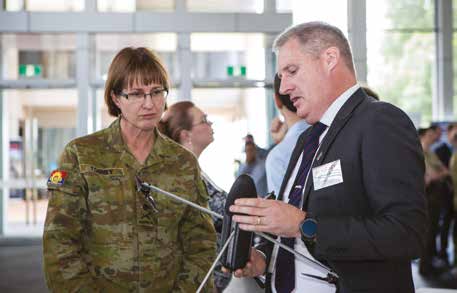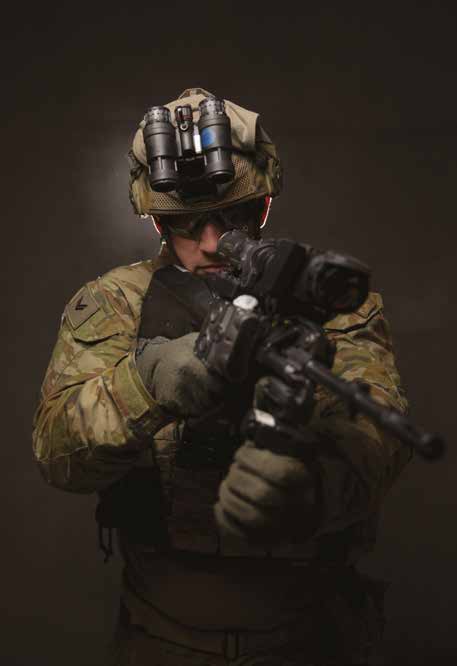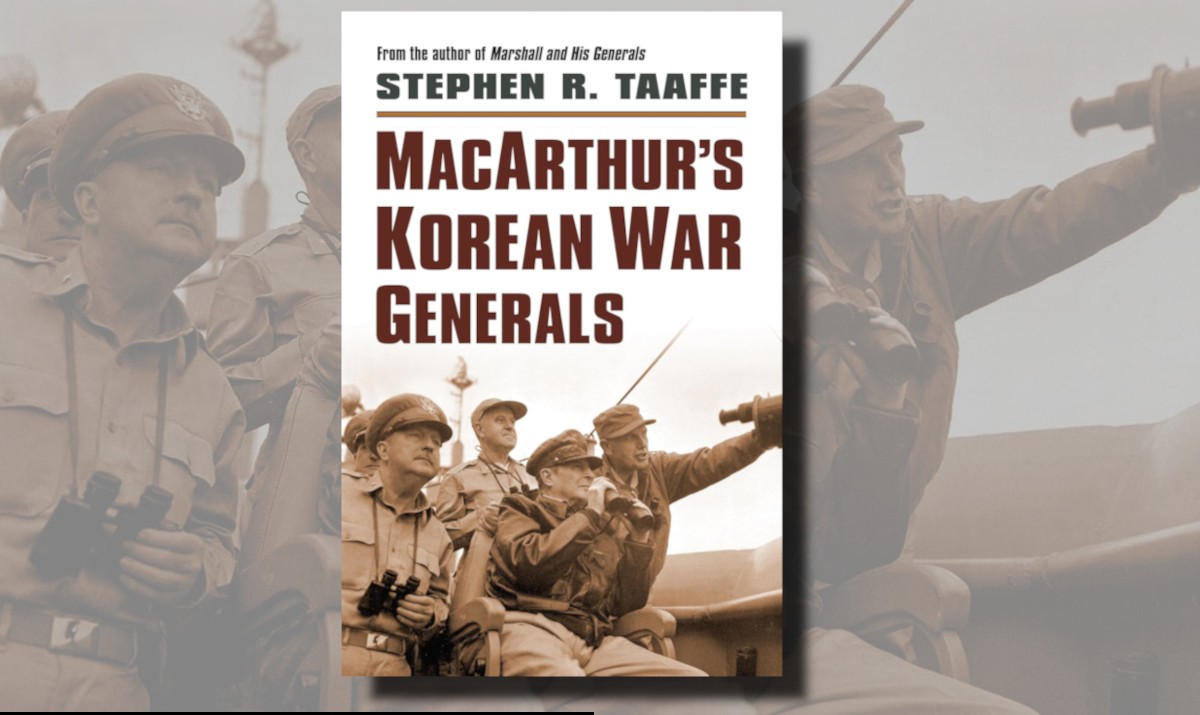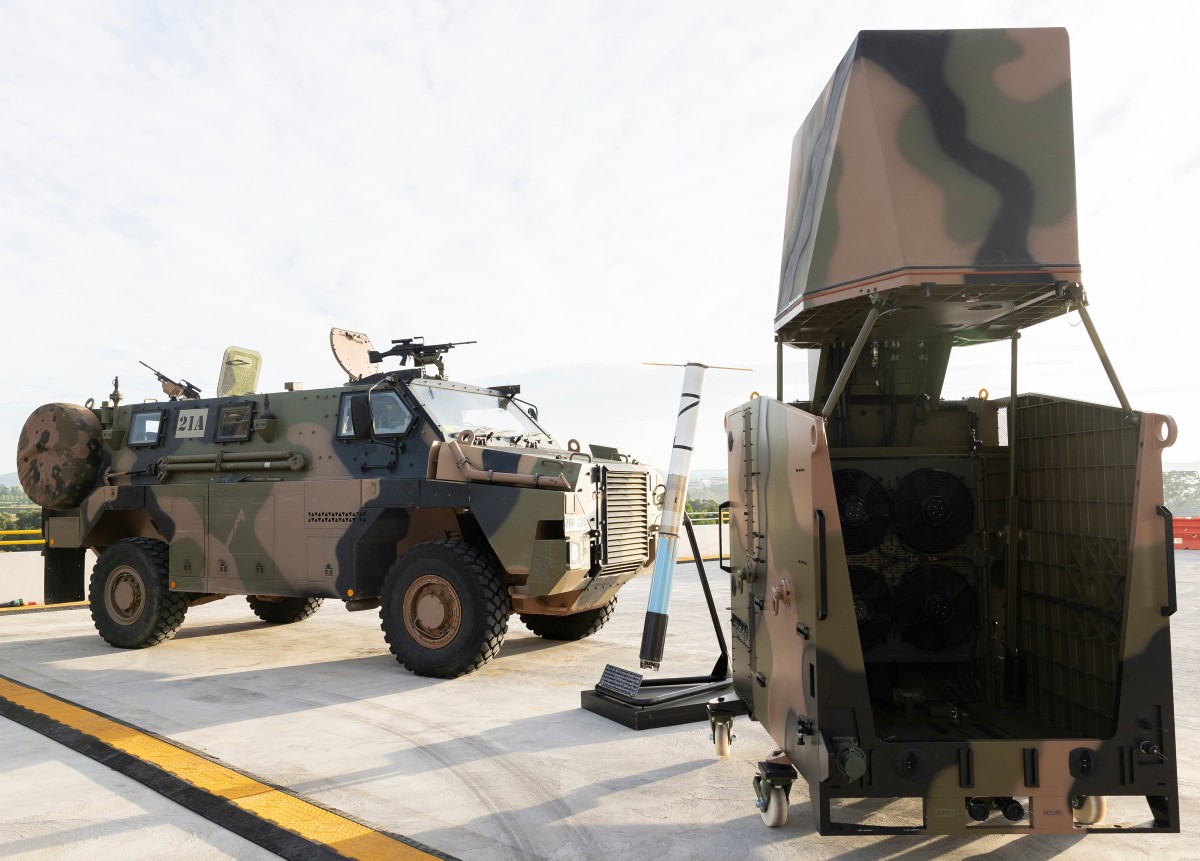The Innovation Warfighter: Improving Capability and Embracing Industry
Abstract
The 2016 Defence Industry Policy Statement (DIPS) emphasises that ‘Australia’s defence industry is essential to the operations of the Australian Defence Force (ADF) and to the capability we need to protect Australia and our national interests’.1 This is an admirable and logical aim, and perhaps it is actively progressing in the larger Defence–industry partnerships that build ships, submarines and armoured vehicles. However, for addressing the challenges of the individual soldier, the Defence and industry relationship is relatively static and one-dimensional. Trade shows, Land Forces conferences and Army Innovation Days provide an opportunity for industry to display their wares, but they lack dynamic interaction with the user community in a field environment. The Australian Army should develop an ‘Innovation Warfighter’—a hands-on exercise incorporating leading-edge industry innovation and direct engagement and feedback from soldiers. Such an activity would provide an opportunity to seek solutions to capability gaps, test new and novel ideas and provide an invaluable connection between Army and the user community. The development of an Innovation Warfighter would provide an example of how to operationalise the DIPS intent to create a true Defence–industry partnership.
Introduction
Each year the Australian Army conducts a series of exercises called the Warfighter series, coordinated and assessed by the Combat Training Centre (CTC) based in Townsville. CTC hosts the Warfighter series, where Australian Army units rotate though exercises to test and develop their core warfighting skills.2 The training is instrumented with electronic tracking and recording mechanisms, is structured and repeatable, and is layered with observer/ trainer staff who provide immediate and collated feedback to the training audience for their ongoing development. The framework of the Warfighter series could be easily adapted to assess the utility of innovative capabilities. Utilising one of the Warfighter exercises, an Innovation Warfighter could draw on years of CTC expertise and accumulated warfighting lessons and provide a framework for realistic training aided by a level of instrumentation and expert supervision.

Australian Army Head of Land Capability, Major General Kathryn Toohey, AM, CSC, consults with a defence industry representative during Army Innovation Day 2018 in Canberra. Image courtesy Department of Defence
US and UK Exemplars
Each year the US Army conducts the Army Expeditionary Warrior Experiment (AEWE). In 2017 the activity sought to:
- place emerging technologies into the hands of soldiers for early and credible feedback from the end user
- provide an opportunity to apply lessons learned and validate changes in design
- inform future concepts, organisations and requirements.3
The annual AEWE has also been replicated by the UK Army Warfighting Experiment (AWE), the first of which was held in Warminster in April 2017. The UK AWE seeks input from industry to solve capability gaps and refine future requirements by influencing the development of prospective new capabilities, and for industry to understand the requirements of the armed forces.4
AEWE and AWE provide forums for the US and UK armies to identify new and developing technologies, but they also offer industry a critical engagement mechanism to get access to soldier requirements and feedback. This enables industry to be involved in the development of capability and treats industry as a true partner. Industry representatives are involved in the early stages of planning and are called upon to submit proposals for equipment to be trialled as part of a field activity. In 2017 AWE established a series of capability questions for industry to respond to:
- Q1: How can we operate effectively in complex, heavily populated terrain?
- Q2: How can we increase our precision?
- Q3: How can we provide combined arms communications in a cluttered electromagnetic environment?
- Q4: How can we generate understanding in an environment when information overload is a risk?
- Q5: How can we sustain our combat power on operations?
- Q6: How should sub-units make use of unmanned air systems?
- Q7: Are there any additional products that do not relate to a particular AWE17 question?
Industry submissions were targeted to address specific capability gaps, and proposals were examined in an escalating series of boards, with successful applicants’ equipment trialled and unsuccessful applications briefed and provided with feedback. AWE received 275 initial submissions, and 72 products were selected for evaluation.5,6
During the conduct of several weeks of field training, industry representatives provided instruction to soldiers in the use of their prototypes and assisted in the integration of the equipment with soldiers’ existing operating systems. The presence of numerous industry representatives with different prototypes also encouraged collaboration between industry partners and multi-system integration. For example, the author witnessed multi-system integration during the AWE as representatives demonstrating an ‘air to water harvesting’ technology teamed up with a large deployable solar panel power generator. This required the representatives from both organisations to integrate their novel capabilities with each other while also integrating into Army capability requirements and existing soldiers’ equipment.
The AEWE and AWE have offered the Australian Defence Force (ADF) the opportunity to participate in their activities. The offer from both nations provides flexibility in commitment, ranging from observer status to participation as analysts or in the provision of troops for experimentation and equipment to be trialled. The ADF, specifically the Australian Army, would be well served by participating in these exercises as observers and with participating troops. A contribution of a small number of soldiers, perhaps up to platoon level, with relevant AHQ and command and control elements would demonstrate the ADF’s engagement with key partners and teach valuable lessons for the better conduct of industry engagement and capability development.
The AEWE and AWE activities provide an excellent link between industry and Army. They enable industry to engage in a formal, structured, measured and repeatable activity that provides direct and tangible feedback for ongoing development. For the relevant armies, they enable a structured relationship with industry that provides excellent exposure to leading technologies, an ability to shape those technologies to meet the army’s needs, and an interesting and exciting opportunity for soldiers to experiment with leading- edge innovations.

Learning the lessons from the United States’ and United Kingdom’s Warfighting Experiments, the Australian Army should develop an ‘Innovation Warfighter’ – a hands on exercise incorporating leading edge Industry innovation with direct engagement and feedback from soldiers. Image courtesy Department of Defence
Australian Defence Force Capability Development Structures
AHQ Land Capability Division and Land Systems Division (LSD) in Capability, Acquisition and Sustainment Group (CASG) are the key capability development organisations that form a relationship to identify user requirements and deliver capability for the land combatant. AHQ owns the capability and CASG is responsible for meeting the equipment needs of the capability owner. CASG is responsible for identifying market solutions and conducting the contractual arrangements with equipment manufacturers to supply the ‘cradle to grave’ capability to Army.
In order to identify the latest and/or more suitable technologies, both the capability manager (AHQ) and the capability deliverer (CASG) require an intimate knowledge of the marketplace. This is a difficult task for both organisations. AHQ is usually staffed by career Army officers who have an intimate knowledge of the user requirement (what soldiers need) but are less likely to have a broad understanding of the capability options available and a limited understanding of the nature of Defence industry and the marketplace.7 CASG staff also experience challenges in engaging with Defence industry, and they are often constrained (or feel the perception of constraint) by the rigours of the Commonwealth Procurement Guidelines and concerns regarding probity.
Industry Forums
Given these challenges, perhaps it is understandable that the relationship between AHQ and CASG with the Defence industry remains relatively one- dimensional. The Integrated Soldier Systems Branch (ISSB)—a subordinate branch with CASG Land Systems Division—conducts twice-yearly industry forums in order to inform industry about ISSB projects and opportunities and to hear from industry. These are useful engagement opportunities, but they are limited in their ability to work dynamically with industry to address capability shortfalls or identify solutions. These forums are generally static and do not provide industry with detailed feedback or trial opportunities in a field environment. In a recent engagement with the then Minister for Defence, the Hon. Christopher Pyne, an Australian industry representative sought to have their engineers embedded with Army units in order to better understand user requirements. In response, Defence declined the request for embedded industry engineers but recommended that the company visit Diggerworks.8 Diggerworks, as a design, development and innovation organisation, routinely engages with industry to understand opportunities to improve soldier system capabilities.9 The visit provided the company’s representatives with a good insight into soldier requirements, but it did not provide the same sort of engagement and exposure that an AEWE/AWE type of activity—an Innovation Warfighter—could have provided.
Australian Army Innovation Day
Since 2014 the Australian Army has sought a capability edge and to harness the power of Defence industry innovation by hosting an annual Army Innovation Day. These events provide another opportunity to further develop the Defence–industry partnership.10 Conducted in the latter part of each year, Innovation Days provide an ‘opportunity for industry to present novel capability options that can shape Army’s approach’11 to capability challenges. In 2017 the focus was on novel weapons and novel effects for a combined-arms team in a joint environment.
The Innovation Day methodology utilises a short-cycle nomination, selection, demonstration and assessment process to present available equipment, tools or enabling systems to a panel of capability specialists and decision- makers.12 In 2017 the event attracted submissions from 19 companies from Australia, the United States, Europe and Israel, presenting 25 industry proposals.13 These events provide an additional opportunity for Defence– industry engagement, but, despite substantial interactive opportunities, the format remains relatively one-dimensional and transactional. Defence industry representatives have an opportunity to provide a static display (with limited dynamic opportunities within a lecture hall or foyer) followed by a three-minute ‘shark tank’ pitch. This format provides good opportunities for innovation exposure. However, with no direct soldier engagement in a field environment, cooperative development opportunities are limited. Further, the culminating three-minute ‘shark tank’ pitch benefits salespeople rather than idea developers.

In order to identify the latest and/or more suitable technologies, both the capability manager (AHQ) and the capability deliverer (CASG) require an intimate knowledge of the marketplace. Image courtesy Department of Defence
Land Forces Conferences
Presented in collaboration with the Australian Army, the Land Forces series is ‘an international industry exposition to showcase equipment, technology and services for the armies of Australia and the Indo-Asia-Pacific’.14 Land Forces expositions provide a key Defence–industry engagement forum that reaches a broad national and international audience. Industry exhibits are further enhanced by a series of conferences, seminars and symposia to address innovation and identify future opportunities for innovation for Defence’s future requirements. This is a critical forum for Defence–industry engagement, but its focus addresses the Defence–industry spectrum at the operational to strategic level and with a static format.
Brigade Good Ideas Expos
At the other end of the spectrum are Brigade Good Ideas Expos. Good Ideas Expos are an Army initiative to encourage innovation from within the workplace. Ideas and prototypes are generated by soldiers and junior officers who deal with the challenges of the modern battlefield every day.15 The 1st Brigade’s Good Idea Expo identified that its aim was ‘to provide a forum for all 1 Bde and other Darwin based Defence personnel to present innovative ideas or potential solutions to improve Army policy, procedures, or equipment’.16
Good Ideas Expos provide a critical mechanism to both reward initiative and encourage idea development, but they are usually disconnected from any industry representation. Army is reticent to allow industry to directly engage with soldiers or units, but, as a result, many of the ideas generated from within brigades are rudimentary or face considerable hurdles in finding an industry partner to bring an innovation to the marketplace. What is missing is a forum to seek capability solutions from industry and then pair successful applications to a realistic environment with direct engagement, feedback and product development with the user.
Australian Army Innovation Warfighter
In an Australian Army context, an AEWE/AWE type activity could deepen the relationship between Army and industry into a true partnership. It could provide an additional layer of engagement that should be synchronised with a diverse group of engagement activities such as the ISSB Industry Forum, Army Innovation Day, Land Forces conferences and Brigade Good Ideas Expos. These existing engagement forums are effective but do not provide industry with an opportunity to engage with soldiers, train them on trial equipment or involve them in the field assessment of emerging capabilities.
An Australian AEWE/AWE activity would require participation of Forces Command units, most likely at the sub-unit or combat team level. Commander CTC has indicated that CTC could provide the exercise framework and the ability to instrument and monitor troop activities; and contribute to the assessment of trialled technologies. Utilising a similar framework to CTC’s advanced collective combat training activities, the ‘Warfighter’ series, an Innovation Warfighter could achieve similar outcomes to the AEWE/AWE activities.
The Soldier Combat System Program (SCSP) and Diggerworks, on behalf of AHQ and LSD, could be in a position to begin to develop the concept of the Innovation Warfighter in conjunction with CTC. As Diggerworks conducts routine engagement with industry, it would be a suitable organisation to coordinate industry engagement and act as an intermediary between industry representatives, CASG and AHQ.
An ideal opportunity to conduct an Australian Army Innovation Warfighter would be to link it to the Army Innovation Day, with the culminating VIP activity enabling visitors to see the equipment in the field and engage with both industry representatives and the soldiers who have trialled the equipment.
Diggerworks currently engages industry on a regular basis, and many industry representatives seek to provide new equipment for trial to Diggerworks and SCSP as well as have direct contact with units. This approach has led to the identification of many new and useful capabilities, but it lacks structure and efficiency. A number of Australian companies have expressed strong interest in the concept of an Innovation Warfighter, identifying its potential to provide essential input into the needs of the user and direct soldier feedback to enhance product development. Thus an Innovation Warfighter would enable a more structured process for the trial of emerging technologies and lead to better discipline for Army’s approach to industry engagement.
Compared with AEWE/AWE, an Australian Army Innovation Warfighter could have a unique addition with the incorporation of successful submissions from Brigade Good Ideas Expos. Harnessing successful concepts identified in Good Ideas Expos and providing an opportunity for them to be trialled in the Innovation Warfighter would provide soldiers with direct recognition from Army and also expose their ideas to the relevant industry partners that may be in a position to bring them to market. The development of appropriate protection for intellectual property would need to be carefully established, but this aspect of an Innovation Warfighter would be a unique point of difference between an Australian activity and those of the AEWE and AWE.
Conclusion
Government, Defence and industry recognise the requirement to develop productive relationships to identify, design and introduce leading-edge capability for the ADF. Currently, the Defence–industry relationship, specifically as it relates to the soldier system, comprises a series of largely unconnected, one-dimensional engagement forums which does not reach the aim of a true Defence–industry partnership.
The development of an Australian Army Innovation Warfighter would connect industry and soldiers in a practical, controlled, assessed and repeatable structure that would be mutually productive. Industry would gain an opportunity to trial leading-edge designs with their target audience, thus gaining invaluable and timely feedback for their further development. Their presence on field exercises would provide them with insight into the demands of a soldier’s operating environment as well as developing and enhancing a personal connection between designers/developers and soldiers. Army would be able to identify key capability challenges that it seeks to address and have a structured and controlled vetting process and testing regime. Soldiers would leap at the opportunity to test their own ideas and trial new and exciting equipment specifically designed to improve their comfort, performance and effectiveness in a realistic warfighting environment. An Innovation Warfighter could be an ideal opportunity to enhance Army’s capability and provide a tangible example of the DIPS aim of creating Defence–industry partnerships.
Endnotes
- Commonwealth of Australia, 2016 Defence Industry Policy Statement 2016, Canberra: Department of Defence, p 5
- CTC conducts several Warfighter exercises throughout each year, focusing on the company / combat team level up to brigade-sized activities. Interview with Colonel Damian Hill, Commander Combat Training Centre, 23 May 2017, Brisbane
- AEWE, 2017, Information Presentation, 2017, at: http://www.benning.army.mil/mcoe/cdid/ aewe/content/pdf/About.pdf
- UK Army, 2017, ‘Testing the Next Generation of Technology’, News and Events: Stay in the Know, 3 Apr, at: http://www.army.mod.uk/news/29024.aspx
- UK Army, 2017.
- The 2018 AWE is titled ‘Autonomous Warrior’. One of the key areas under development is the autonomous ‘last mile’ resupply. The ‘last mile’ represents the highly dangerous final approach to the combat zone and is crucial to ensuring soldiers have the food, fuel and ammunition to keep them alive and fighting: British Army, 2018, ,‘British Army Set to Redefine Warfare with Joint Autonomous Warrior’, News, 20 Jun, at: https:// www.gov.uk/government/news/british-army-set-to-redefine-warfare-with-jo…- autonomous-warrior?utm_source=892590be-54bb-4848-8ea0-13f84b2da33c&utm_ medium=email&utm_campaign=govuk-notifications&utm_content=immediate
- The Capability Life Cycle is not taught to Army officers as a part of all corps professional development courses. It is not currently taught to Army officer cadets at the Royal Military College, Duntroon, nor at professional development courses in the All Corps Captains or Majors Course. It is comprehensively covered for selected officers who attend the Capability and Technology Management College, but there are only approximately 35 Army officers selected for this course each year. It is briefly covered at the Australian Command and Staff College (approx. 60 per year) for selected officers at the mid-senior Major level.
- Diggerworks is an organisation based at CASG, but it collaborates with AHQ, Defence Science and Technology Group, academia and Defence industry to enhance the capability of ADF Land Combat.
- Australian Army, 2017, ‘Diggerworks’, 20 Mar, at: https://www.army.gov.au/our-work/ partnerships/diggerworks
- Editorial Staff, 2017, ‘Army Innovation Day 2017—Novel Weapons and Novel Effects’, Australian Defence Magazine, 6 Nov, at: http://www.australiandefence.com.au/yafevent/ army-innovation-day-2017-novel-weapons-and-novel-effects
- Department of Defence, 2017, ‘Innovation Day Showcases New Capabilities’, 6 Nov, at: https://news.defence.gov.au/media/media-releases/innovation-day-showcas…- capabilities
- Department of Defence, 2017
- Department of Defence, 2017
- Land Forces, 2017, ‘2020 Land Forces Australia Indo Asia Pacific’, at: http://www.landforces.com.au/
- Defence Intellectual Property regulations stifle innovation. Defence maintains that any Defence capability idea generated by an ADF member while the member is serving remains the property of the Department of Defence. An innovative approach to rewarding innovation would be a significant boost to Defence’s capacity to identify solutions to its own capability challenges. Although participation is strongly supported within brigades for submissions to Good Ideas Expos, actively rewarding innovation, such as retaining a level of individual IP and recompense, would send a strong market signal to idea generators within our own workforce.
- Australian Army, 2017, 1st Brigade, ‘Robertson Barracks Good Ideas Expo 24–25 October 2017’, Facebook, 27 Sep, at: https://www.facebook.com/1stBrigadeAustralianArmy/ photos/a.1578724675673890.1073741848.1565282057018152/1983811785165175/?ty pe=3



